Hidden wiring indicator: principle of operation and instructions for use
When drilling holes in an unfamiliar wall, it is easy to get an electric shock or damage the wiring by a short circuit, getting into the cable under voltage. To prevent such situations, a hidden wiring indicator (COI) is used. In order for the device to be useful, you need to know how to use it. Do you agree?
We will introduce you to all types of devices currently used to determine the path of a hidden electric wire. Let's talk about the principles of action and the rules for choosing indicators. For independent home masters, the article presented by us contains an instruction manual.
The content of the article:
Types of wiring indicators
Not all indicators of hidden wiring have the same operation pattern and function. Manufacturers are trying to equip the equipment with additional options to gain a competitive advantage. Because of this, there are several classification categories of detectors that need to be dealt with in detail.
According to the physical principles of work
The main division of indicators of hidden wiring occurs according to physical principles on the basis of which their work is based.
Distinguish these types of detectors:
- electromagnetic;
- metal detectors;
- electrostatic;
- combined devices.
Electrostatic detectors are capable of detecting live wires without passing current through them. They have a low price and are easy to operate.

Using electrostatic detectors, cable breaks are also easy to detect. The disadvantages of these devices include high sensitivity to induced electromagnetic interference. The normal operation of the detectors can be interrupted by the routers, microwave ovens, computers, and TVs included in the network.
Also, electrostatic indicators are not suitable for determining the location of wiring in wet walls and metal-reinforced structures.
Electromagnetic ICPs can only detect wires that carry current. For budget models, the minimum network load for the correct operation of the device is 1 kW.
That is, using such a detector to determine the wiring going to the lamps and chandeliers will be practically impossible. The advantage of such devices is their high accuracy, which allows you to track the location of the power cable to several millimeters.
Pure metal detectors are rarely used as indicators of wiring, because they respond equally to copper pipes or wire, and on metal fittings, and on nails and wire clips.
In ICPs, metal detectors are typically used to confirm weak or unstable signals received by other sensors.
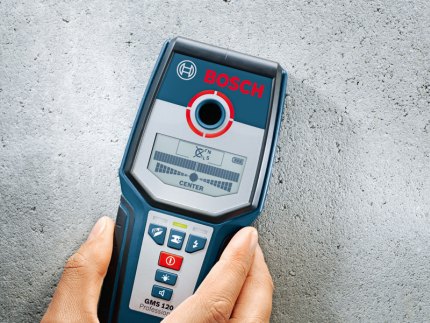
Combined indicators of hidden wiring are expensive, but also have good functionality. Due to the use of several detection methods at the same time, these devices provide high efficiency. In addition, combined COIs are often equipped with additional features that are required by professional electricians.
For household use, inexpensive electrostatic indicators are quite suitable, which is enough to determine the surface apartment wiring.
By performance
Hidden wiring indicators have a lot of structural and functional differences, so you can divide them into several categories.
According to the scope of application, COIs are divided into:
- household;
- professional.
Household detectors usually do not contain metal sensors, because their use on reinforced walls is highly efficient. The cost of simple devices starts at $ 5. They are equipped with one sensor, as well as a light or sound indicator for detecting wiring.
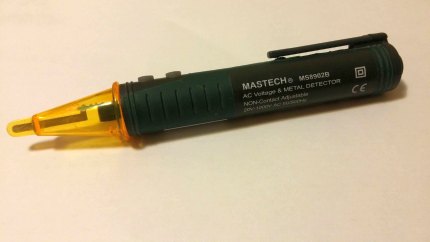
Some professional models can even detect cables to a depth of 150 mm with an accuracy of 5 mm. Their cost can reach $ 500-600, with the same size with household detectors.
The wiring detection indication may be of the following types:
- sound;
- light;
- graphic;
- combined.
Light and sound indications are realized respectively using an LED or a sound speaker. Sometimes the signal intensity correlates with the power of electromagnetic radiation.A graphical indication is displayed on the LCD.

In appearance, COI can be divided into:
- cylindrical;
- flat.
Cylindrical devices are usually an indicator screwdriver with hidden wiring detection function. Such models are not very functional, but also cheap. Screwdrivers are capable of detecting an electrical cable, usually at a depth of no more than 2 cm.
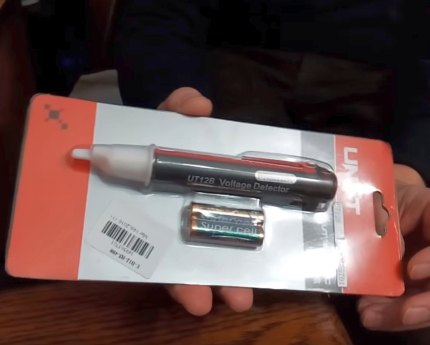
The cost of the detector depends largely on the depth of detection of hidden wiring and additional functionality. Therefore, you should study the principle of operation and the scope of application of various models of indicators.
Detector operation principle
The principle of operation of the hidden wiring indicator is quite simple.
Usually it consists of three elements:
- electromagnetic field sensor;
- amplifier;
- indicator.
The simplest ICP scheme is shown in the figure. It can be assembled independently with the help of elementary parts purchased on the radio market.

The operation of electrostatic devices (for example, the Woodpecker model) is ensured by the property of the transistor to change the resistance during interference at the gate output. Metal detection sensors are based on the fixation of currents arising in a metal object under the influence of the magnetic field of the inductance coil of the ICP itself.
Devices with sensitivity control and additional functions have more complex circuits, but the basic elements remain relevant.
Scopes of indicators
The scope of IPS depends on the configuration of the device and its sensitivity.
Basic models of combined detectors can be used for such purposes:
- determination of hidden electrical wiring in ceilings, walls, floors;
- detecting cable breaks;
- the correct connection of the phases of electric meters;
- definition of a phase wire;
- detection of ungrounded equipment;
- functional check of fuse-links and fuses;
- detection of the location of metal reinforcement in the wall,
Additional features of the ICP include the following functions:
- indication of objects of the types “non-metal”, “non-magnetic metal”, “magnetic metal”, “live wiring”;
- determination of surface temperature;
- indication of accuracy of detection in percent;
- tree detection;
- automatic detection of the center of metal objects.
You need to think about the necessary functionality before buying a detector, because the price of devices with a minimum and maximum filling can differ by 50-100 times.
Hidden Posting Indicator Rules
Models of indicators of hidden wiring, for the most part, guarantee the functionality described in the instructions.

However, there are features of a choice that an ordinary person does not think about when buying specialized electrical equipment.
They are listed in the form of a list of rules:
- The physical parameters of foreign power grids can be very different from domestic ones, so you should not buy IPS that are not certified under national law.
- It is necessary to consider the material of the walls in the place of the intended use of the device and the depth of the wiring.
- When determining the location of inactive wiring, devices with metal sensors are necessary.
- After purchasing the device, it is advisable to check its performance in the store. The detection depth can be estimated by blocking the cable with ceramic tiles, wooden boards or foam sheets.
- Budget models due to the simplicity of design can be more durable than ICP with complex electronic circuits.
When buying a hidden wiring detector, you should definitely consult with the seller, because with an independent choice there is a high probability that the purchased equipment will not fully comply with the tasks assigned to it.
The following photo selection will familiarize you with popular models of detectors that can accurately determine the position of a hidden wiring path:
Instructions for use of the detector
Due to the variety of designs of hidden wiring indicators, it is necessary to consider the instructions for their use on the example of a specific model. For this, an inexpensive electrostatic ICP “Woodpecker E-121” was widely used by domestic installers. But first you need to prepare for the search procedure.
Preparation for the upcoming work
To accelerate the detection of wiring using any detector, experienced specialists suggest observing a number of simple rules.
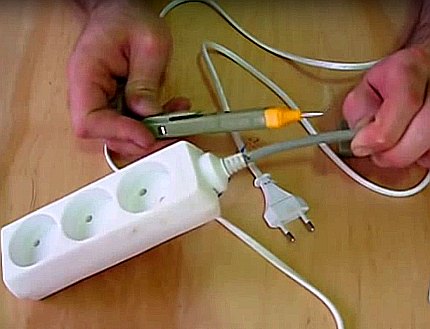
The following are the main ones:
- Initially test the performance of the device on any live wire. The detector may simply run out of batteries, and it will not work correctly.
- Calibrate the device at a distance of 1 meter from the walls, if such an option is present.
- Surveyed surfaces should not be wet.
- If possible, turn off all working electrical appliances in the apartment, including telephones.
- The accuracy of determining the wiring will be drastically reduced if conductive adhesive for wallpaper was used.
These recommendations will eliminate time losses due to inoperative equipment and inadmissible parameters of the investigated surface.
Use of the Woodpecker E-121 detector
The Woodpecker E-121 detector is capable of operating in 4 sensitivity ranges.
The procedure for working with this wiring detection device is as follows:
- Press the sensitivity range buttons one at a time. The signaling device should emit a short light and sound signals. If there is no response from the device, check the battery.
- Press the “4” button (provides maximum sensitivity), bring the detector to the analyzed surface and, if there is an indication, reduce the sensitivity by pressing the buttons from “3” to “1” in sequence.
- Simultaneously with a decrease in sensitivity, it is necessary to reduce the distance to the detected object, localizing the zone of operation of the detector.
- To find the site of the conductor, move the detector along the wall, trying to find the site with the maximum electromagnetic field.
- To neutralize the interfering surrounding currents, place a hand on the analyzed surface near the detector. If there is no conductor near the hand, then the Woodpecker E-121 will cease to give signals.
- When searching for a broken wire, apply voltage to the damaged core, and ground the rest.
The accuracy of determining the occurrence of the electric cable depends on the degree of humidity and the materials surrounding the wire.
Detection of electrical wires in stucco walls, reinforced concrete panels, and in a grounded shield will be difficult.
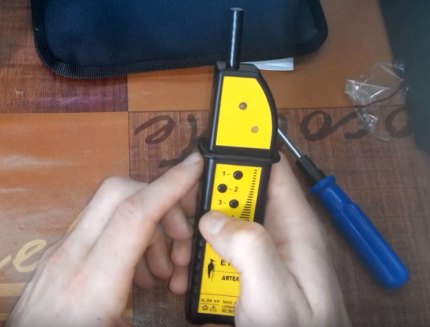
To test fuses and fuses, turn on the “1” or “2” mode and touch the antenna to the contacts before and after the fuse. In the event of a malfunction, the detector will not beep.
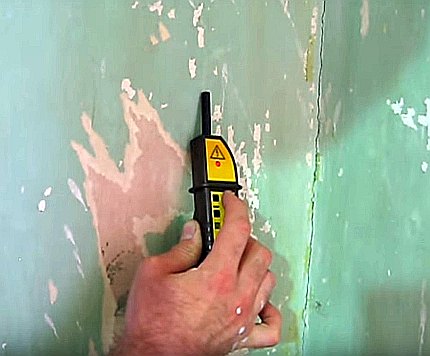
For the correct interpretation of the results of the apparatus, you should first familiarize yourself with its instructions, because almost every detector requires the correct initial settings.
Conclusions and useful video on the topic
Video materials will help to see the effect of various detectors in work and evaluate the real benefits of expensive models. A comparison of the performance of models of indicators of hidden wiring of various price ranges is presented.
Video # 1. Work with ISP "Woodpecker E-121":
Video # 2. Comparison of four hidden wiring detectors:
Video # 3. Overview of the expensive and cheap hidden wiring indicator:
The effectiveness of a device for determining hidden wiring does not always correlate with its price. The most important factor that you need to focus on when choosing a device are the characteristics of the immediate object of examination. And with its uncertainty, it is necessary to stipulate in the store the possibility of exchanging the detector for another model.
Tell us about how you used the indicator to determine the route of a hidden wiring or to identify its break. Please write comments in the block below, ask questions and post photos on the topic of the article. Share useful information and technological subtleties known to you.

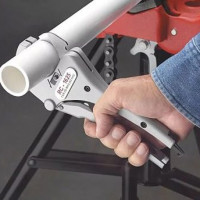 Scissors for cutting polypropylene pipes: species overview + instructions for use
Scissors for cutting polypropylene pipes: species overview + instructions for use  A cable for cleaning pipes: types, how to choose the right + instructions for use
A cable for cleaning pipes: types, how to choose the right + instructions for use  Sealant for the bathroom: types, selection tips and instructions for use
Sealant for the bathroom: types, selection tips and instructions for use  Glue for PVC pipes: an overview of the best compositions and instructions for use
Glue for PVC pipes: an overview of the best compositions and instructions for use 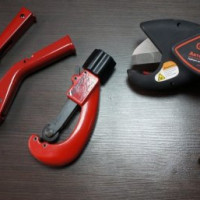 Pipe cutter for plastic pipes: choose the best model + instruction for use
Pipe cutter for plastic pipes: choose the best model + instruction for use 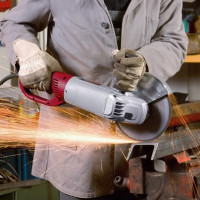 How to work with a grinder: safety measures + instruction manual
How to work with a grinder: safety measures + instruction manual  How much does it cost to connect gas to a private house: the price of organizing gas supply
How much does it cost to connect gas to a private house: the price of organizing gas supply  The best washing machines with dryer: model rating and customer tips
The best washing machines with dryer: model rating and customer tips  What is the color temperature of light and the nuances of choosing the temperature of the lamps to suit your needs
What is the color temperature of light and the nuances of choosing the temperature of the lamps to suit your needs  Replacement of a geyser in an apartment: replacement paperwork + basic norms and requirements
Replacement of a geyser in an apartment: replacement paperwork + basic norms and requirements
Modern technologies are developing very rapidly, therefore, if there is no hidden wiring detector at hand, do not despair. If your smartphone has a magnetic sensor function, then just download the Metal Detector application. Yes, you will not get 100% accuracy, but you can determine the location of the wiring. In addition, now on the Internet there are many devices that can be assembled from improvised means. I still recommend using proven chipboards, but if there is an urgent need, but the device is not at hand, it is better to use the methods indicated above.
So, does a smartphone with Metal Detector normally detect wiring? Sounds, to be honest, doubtful.
When she sheathed the hallway walls with the help of MDF panels, I bought myself the simplest detection detector in the form of a small screwdriver. Even he was able to determine the exact position of the cables behind the wall. So yes, the thing is useful.